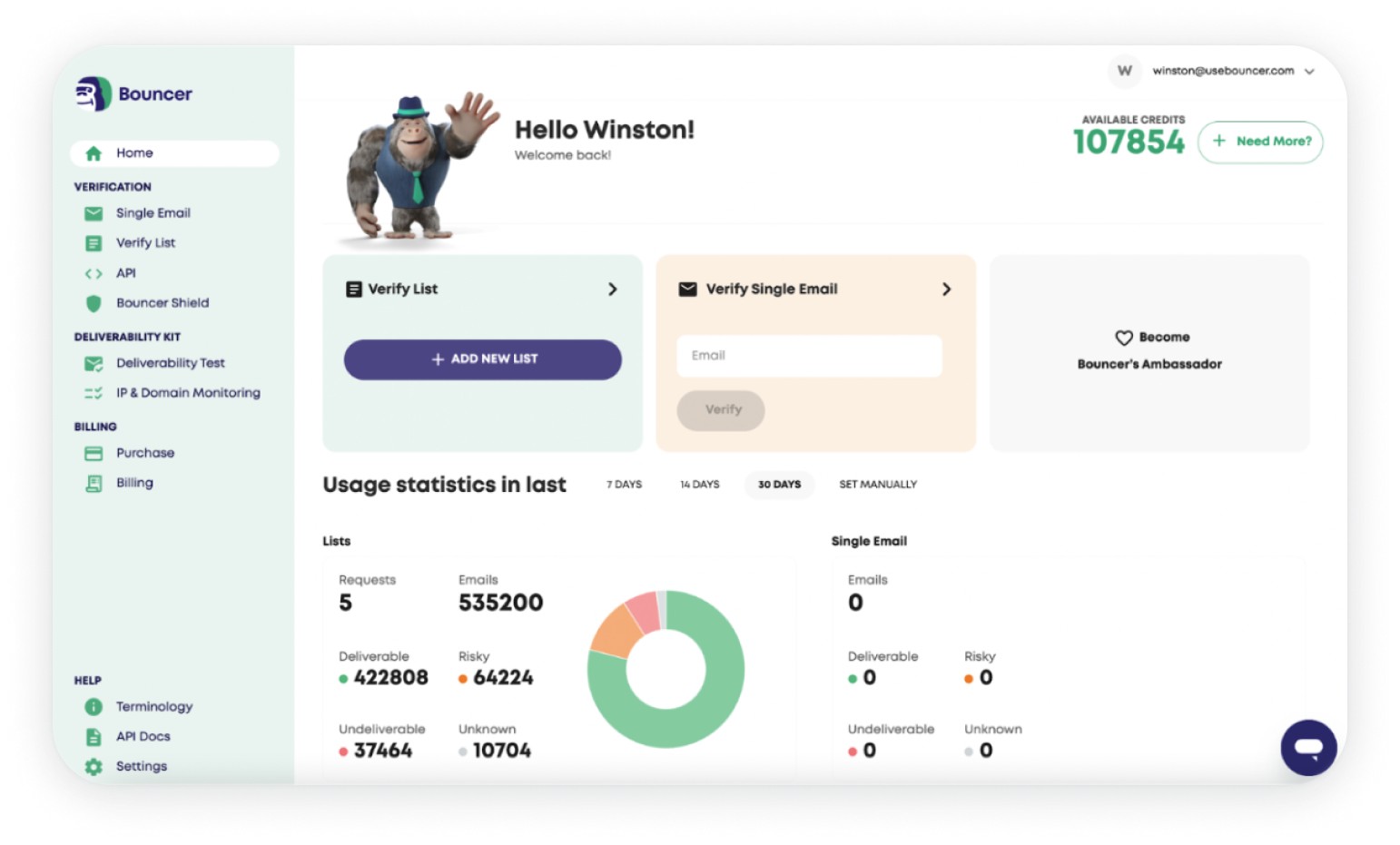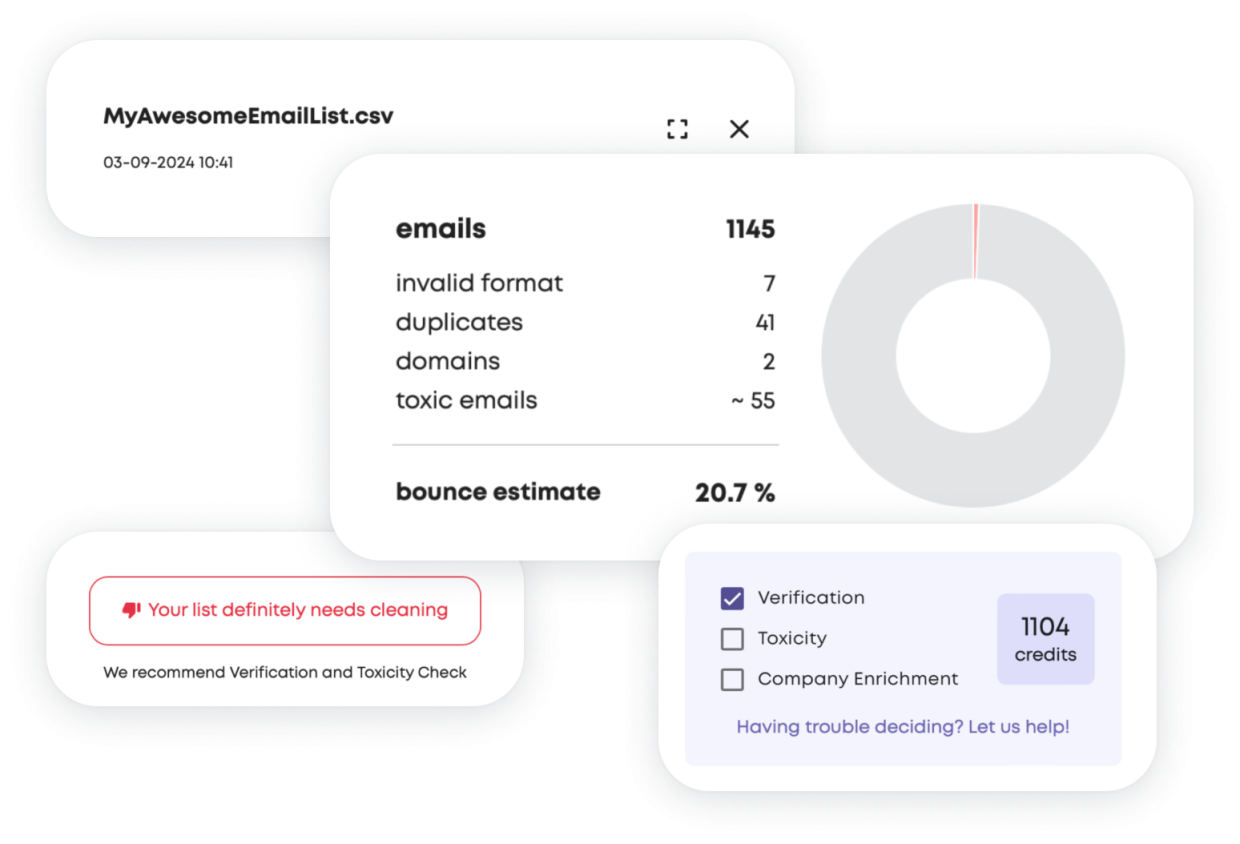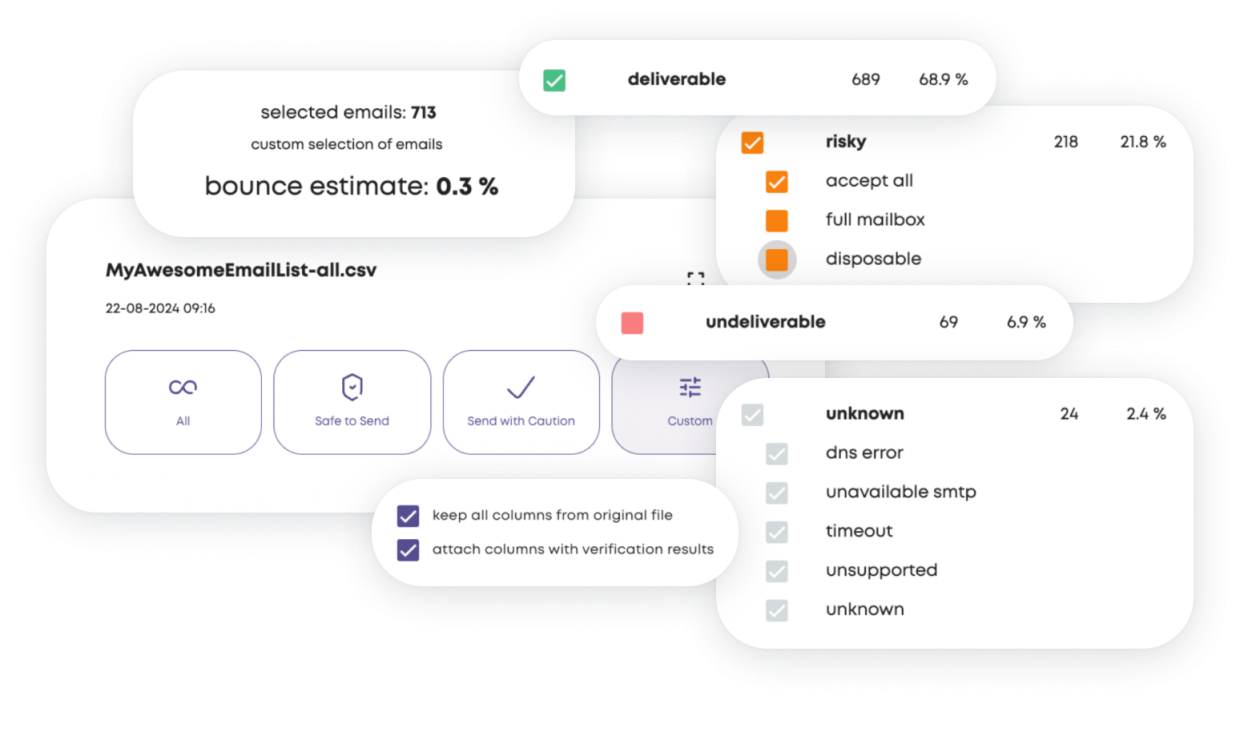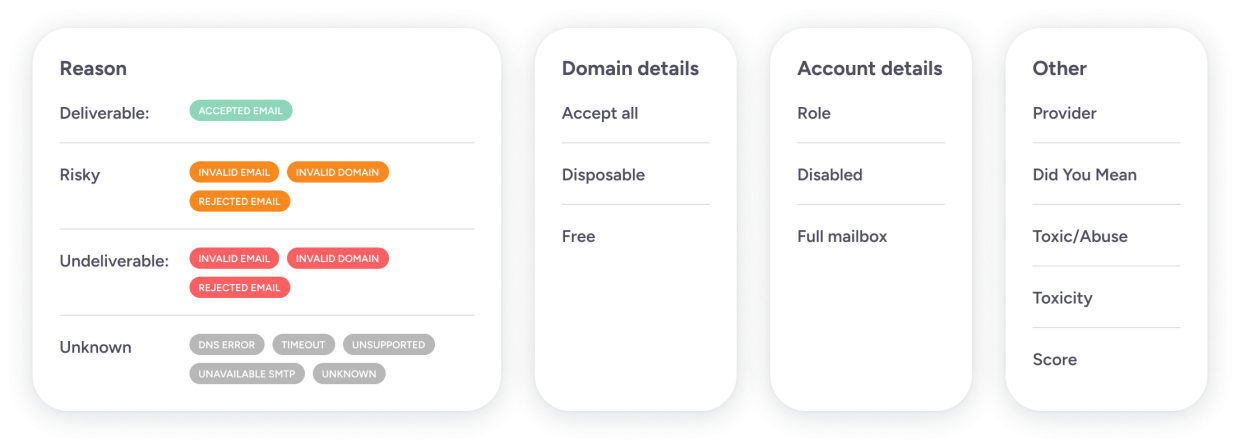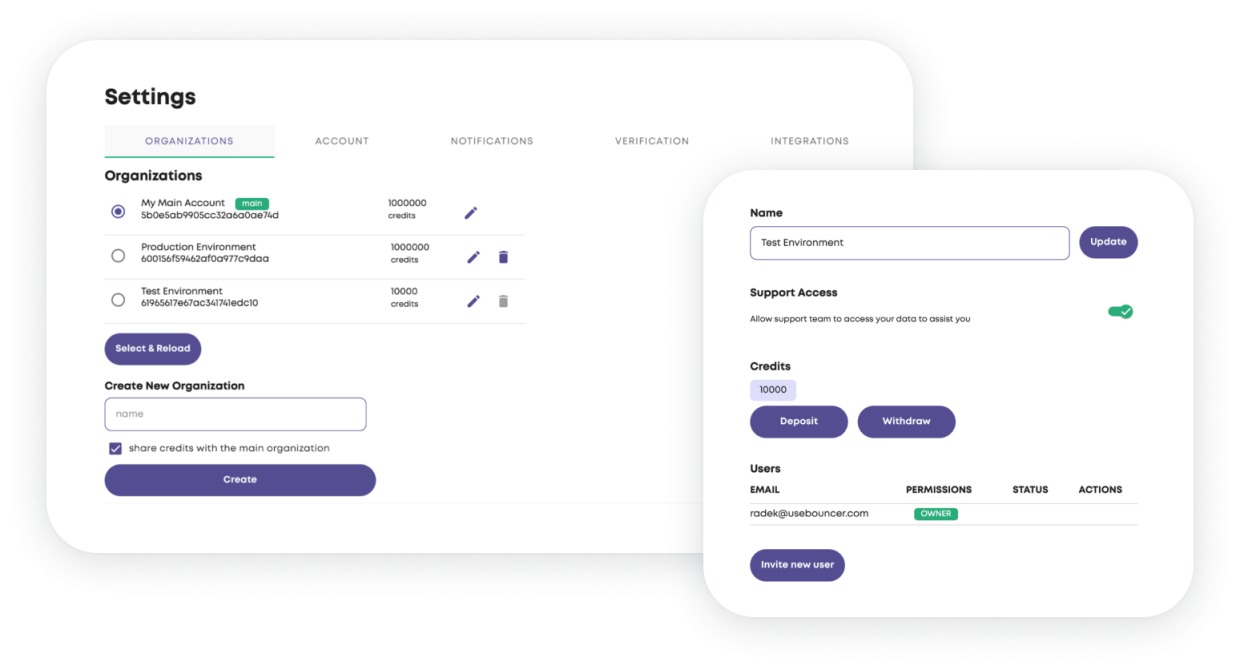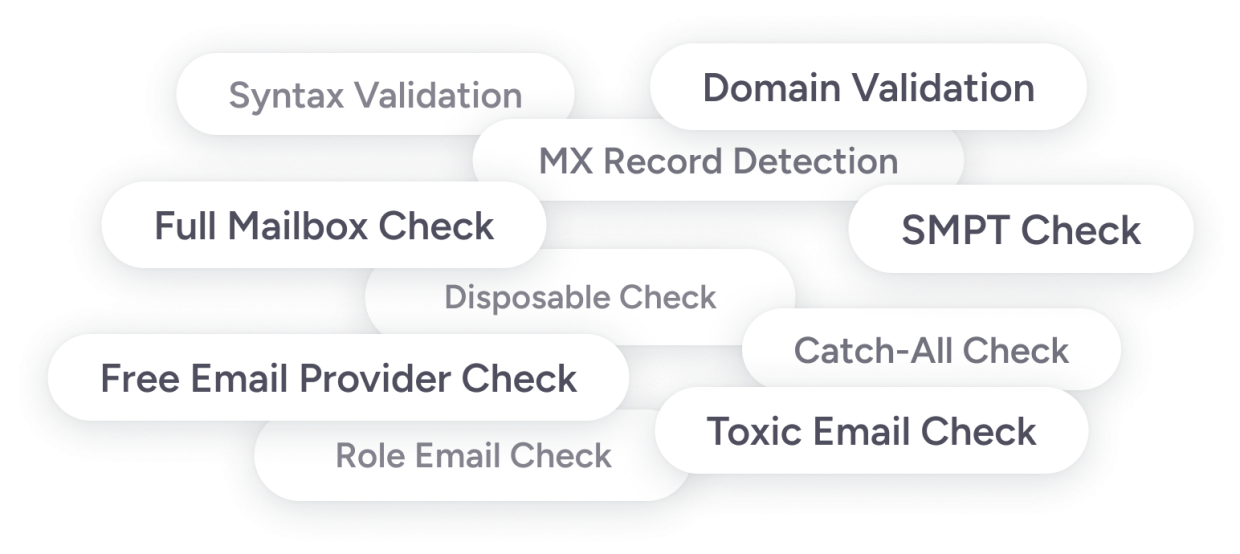Email List Verification for Engineers
Email verification that doesn’t get in your way.
Bouncer offers a fast, fault-tolerant API that plugs into your stack in minutes — with low latency, structured output, and no endless back-and-forth with sales.

Bouncer Email Verification Tool
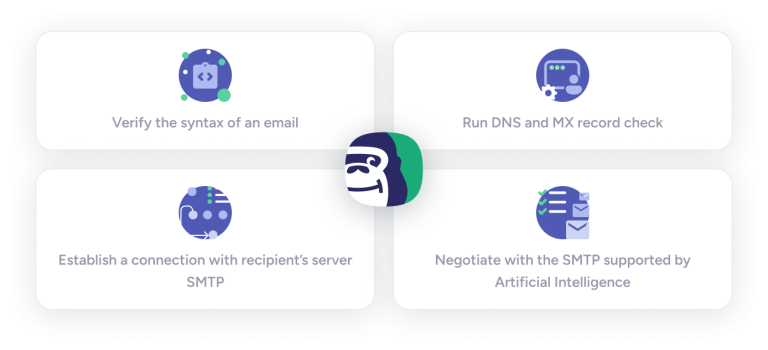
Made for devs who want control, speed,
and clean data
You shouldn’t have to email anyone to get an API key. Or scroll through 40-page docs to find a status code. Bouncer gives you a production-ready email verification API with fast response times, structured JSON output, and sandbox access out of the box.
Test freely, deploy confidently, and integrate at any scale, without worrying about legal risk or broken workflows.
Why developers choose Bouncer
- Clean, well-documented REST API
Plug in and test in minutes. - Structured JSON responses
No decoding nightmares, just usable data. - Zero Downtime Policy
Our system is always available and stable.
Bouncer for Engineers
Works where you work
No vendor lock-in. No weird SDKs. Bouncer’s API plays well with any stack — whether you’re validating signups, syncing CRM data, or building a custom pipeline.

Developers love Bouncer







Let Bouncer power your validation — without slowing you down
Docs. Keys. Results. No waiting. Whether you’re running real-time checks or batch-processing millions of records, Bouncer gives you the control, speed, and structure your apps deserve.
Common Questions
Why should we implement email verification in our stack?
To protect system integrity and improve deliverability. Verifying emails helps prevent junk data from entering your database, reduces bounce rates, and ensures that transactional and onboarding emails reliably reach users.
Is it better to verify emails in real-time or in bulk?
It depends on your use case. Real-time API verification is ideal for signup forms, while batch verification is better for list maintenance or cleaning existing data. Many teams use both.
How accurate are email verification APIs?
Good verification APIs (like Bouncer’s) can detect invalid, disposable, or role-based addresses with high accuracy. While no service is 100%, you can expect a significant drop in hard bounces when using a trusted provider.
Should we verify users even if they’ve signed up on their own?
Most APIs are fast—typically under 500ms. Still, you can use async calls or webhook-based retries to avoid blocking user experience while still flagging questionable addresses post-submit.
How to handle risky or unverifiable emails?
Use a scoring or tagging system. Many APIs return statuses like “valid,” “risky,” or “unknown.” You can accept risky emails with caution (e.g. prompt for double opt-in) or add them to a review queue.
What should we look for in a verification provider?
Look for fast API response times, clear documentation, uptime reliability, and strong privacy compliance (like GDPR). If you don’t need deep integrations, a service like Bouncer offers accurate results, straightforward pricing, and an easy developer experience.











